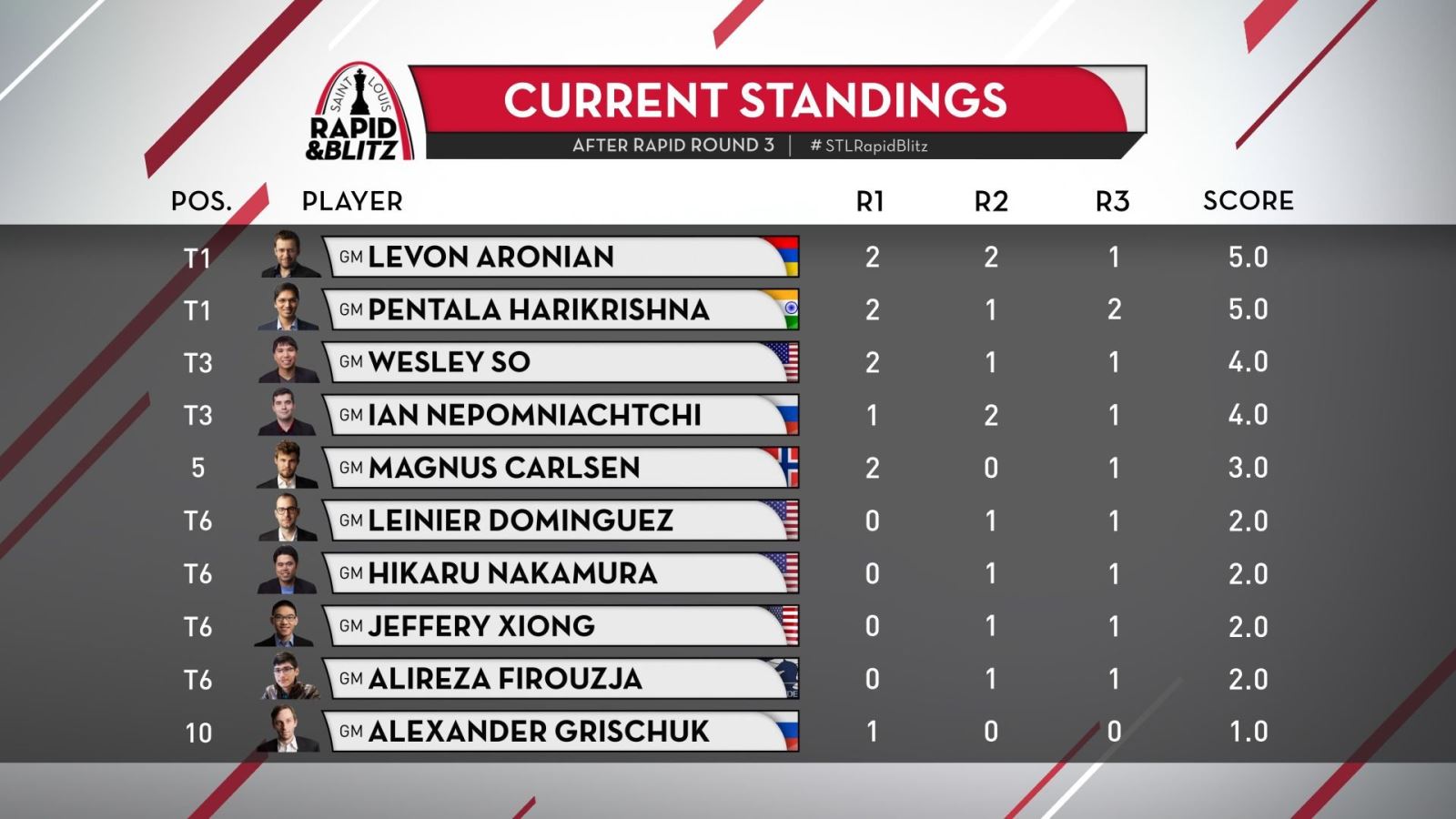


Usually the Saint Louis Rapid and Blitz tournament is played as one of several events that make up the Grand Chess Tour. Given this year’s crisis, however, it is taking place as a separate online tournament. As has been the case in previous online competitions, disconnection-related issues were not absent during the first day of action, with world champion Magnus Carlsen the one losing a game from an equal position in round 2.
The organizer of a five-month tour, Carlsen knew this is the kind of thing that can happen under this format. Although he looked upset once he realized he had lost on time, he accepted defeat, as there is little anyone can do when this situation arises. The commentators rightfully pointed out, however, that organizers are learning from their mistakes, and that better regulations and technical measures might be put forth in the future, if online tournaments remain in the calendar once the crisis is over.
Carlsen lost that game after having beaten Hikaru Nakamura in round 1. The world champion could not bounce back from the unfortunate loss and drew with Wesley So in the third game of the day. Meanwhile, Levon Aronian and Pentala Harikrishna each scored two wins and a draw to take the lead in the standings table.

Click to enlarge
What at some point looked like a rather peaceful opening round ended up with four out of five games finishing decisively. In the most anticipated matchup of the round, Carlsen defeated Nakamura with the black pieces. The American lost the thread on move 24:
Black has the better structure and a passer on the c-file, but White still has chances to create something on the kingside. Here Nakamura needed to go for 24.Rxc4, giving up the exchange — 24...Ne3 25.Qxe3 Qxc4 26.Ne4 — but getting a very active queen and knight duo as compensation. Instead, he played 24.Kh1 and after 24...c3 was unable to stop Carlsen’s passed pawn. Black got the win ten moves later.
Meanwhile, Alireza Firouzja and Aronian, unsurprisingly, were in the midst of a sharp fight. The youngster, playing white, had his king on f6, when a mistake suddenly gave up the game:
By playing 39.h6 in the previous move, Firouzja missed that 39...g2 wins for Black. After 40.h7, Aronian had the intermediate check 40...Nd7+, when the white king needs to go to the g-file allowing Black to queen with check. Firouzja resigned.
So and Harikrishna also got off to a winning start, beating Jeffery Xiong and Leinier Dominguez respectively.
Select an entry from the list to switch between games
Two eventful decisive results were seen in round 2.
Ian Nepomniachtchi played enterprisingly in the opening against Carlsen, advancing his h-pawn down the board while marshalling the black pieces. In return, the world champion got strong piece play with Black’s king still in the centre. Eventually, Carlsen gained a pawn in a heavy-piece endgame; Nepomniachtchi was resourceful in defence and recovered material equality. Soon after, the game suddenly came to an end:
An exciting fight that was about to finish peacefully ended up favouring the Russian grandmaster, as Carlsen disconnected and lost on time in this position.
Meanwhile, Aronian had been suffering for quite a while after having misplayed the opening:
White’s 14.bxa6 allowed Alexander Grischuk to go for 14...Qh4+, when 15.Qf2 is not possible due to 15...Nc2+ (14.Bd3 would have prevented this idea). Thus, the Armenian had to leave his king in the centre with 15.Kd1.
Grischuk continued to improve his position and seemed to be en route to scoring a memorable win. However, as Yasser Seirawan explained, this is when things get tricky for the Russian, who usually gets these advantages and spends way too much time calculating the precise way to finish off his opponent — sometimes he gets incredible victories, but other times he finds himself with little time on the clock and an increasingly difficult task ahead.
The ever-resourceful Aronian not only defended against Grischuk’s threats but went on to get a 68-move win after his colleague misplayed the endgame. The Armenian was the only player on a perfect score after two rounds.
Grischuk’s woes continued in round 3, as he lost a second game in a row, this time against Harikrishna. The Russian faltered in a sharp ending:
The natural-looking 36.Re7+ was White’s final mistake. After 36...Kf8 37.a7 Nxe2 38.Kf1, 38...Nd4 is a nice winning shot.
White defended the knight with 39.Rc7, but Black now has mate-in-3 — 39...Bd3+ 40.Ke1 Nxf3+, and Grischuk resigned before allowing 41.Kd1 Ra1# to appear on the board.
In the first diagrammed position, 36.Kf1 Rxe2 37.Rb7 is the way to defend for White.
The remaining four games finished drawn.